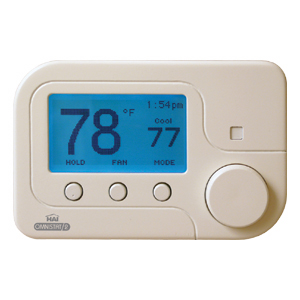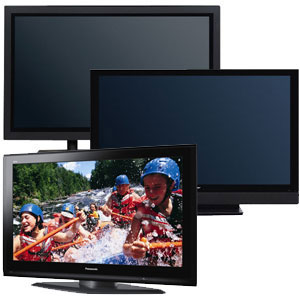 The Smart Grid’s helpful little brothers may be the smart thermostats that do more than just monitor your home’s heating and cooling.
The Smart Grid’s helpful little brothers may be the smart thermostats that do more than just monitor your home’s heating and cooling.
You’re going to be hearing a lot about smart thermostats. That’s right, the boring little device on your wall has gone from being just a thermostat to a “programmable” thermostat—and now a “smart” thermostat. Some come with color touchscreens.
And yes, smart thermostats will connect to their bigger brother, the smart grid.
You may also find smart thermostats being called programmable communication thermostats (PCT), which can receive information wirelessly. That wireless data allows the thermostat to receive a signal—say, from your local electric utility—to turn down the air conditioning if the electric rates are high.
That means variable rate or time-of-day pricing from your utility, so peak demand hours such as 3 to 8 p.m. will be priced higher than those at night. Some utilities are already implementing this, and it is a BIG part of the smart grid initiative.
Here’s why: It will save us energy and money. You sign up for discounted rates (as in not the peak rates) and the utility can turn down your A/C or shut off your washer or dryer or other energy-hungry appliances during peak periods. This is called demand response, or demand-side management.
This is where some people scream “Big Brother!” Not that many may want the utility interfering with their climate comfort or their domestic chores, but if you had the choice of when the air conditioning turns down or the washer goes on, depending on the price of electricity—that would be a different story.
That’s where thermostats connected to some sort of processor or home control system comes in. The processor gets the information on rate changes from the utility, and according to how you’ve programmed it, tells the smart thermostat to turn down the A/C a degree or two.
This, I believe, is how we’ll see an energy-saving smart grid implemented in the home. There are lots of smart and communicating thermostats out there, from companies like HAI, Trane, RCS and more. Some use mesh-networking technologies like ZigBee and Z-Wave, allowing them to communicate wirelessly. And they can do some cool things.
HAI’s Omnistat2 thermostats, for instance, can display your heating or cooling patterns and learn them, and display the costs of electricity from the utility and your set-back points. It can even control your lights. Pretty slick. HAI also has an In-Home Display unit.
Trane’s TZEMT400AB32MA Remote Energy Management Thermostat can send you email and text alerts when unwanted adjustments are made. It also works with Schlage’s LiNK door-lock and control system. RCS’s RCS TZ43 offers remote control operation and is designed for use with networked systems. And Ecobee’s Smart Thermostat offers weather, a web portal, a setup wizard and quick save function to remember your current comfy temperature setting.
So why would one need all these brains in a thermostat that you can walk up to and set yourself? Because we don’t manage our thermostats well. Many people, according to a recent McKinsey & Co. report on energy efficiency, don’t even program their programmable thermostats, choosing to override the time of day options with a constant temperature. That wastes energy and money when you’re sleeping or not at home. You can also save a significant amount on both just by turning the heat or A/C down one degree Fahrenheit.
What Smarts to Seek in a Thermostat
Wireless communication (ZigBee or Z-Wave)
Easy-to-use interface
Readable display
Connectivity to home control system
Email, text or phone alerts
Learning ability of your habits
Display of utility data
Web portal or other display device
Remote programming and operation
by Steven Castle
http://www.electronichouse.com/article/smart_thermostats_cool_climate_control/
Custom Installation Services, LLC – Home Theater, Audio and Video services in North Carolina and South Carolina
 LG and Panasonic are trying to revive plasma displays.
LG and Panasonic are trying to revive plasma displays.



 The Smart Grid’s helpful little brothers may be the smart thermostats that do more than just monitor your home’s heating and cooling.
The Smart Grid’s helpful little brothers may be the smart thermostats that do more than just monitor your home’s heating and cooling.